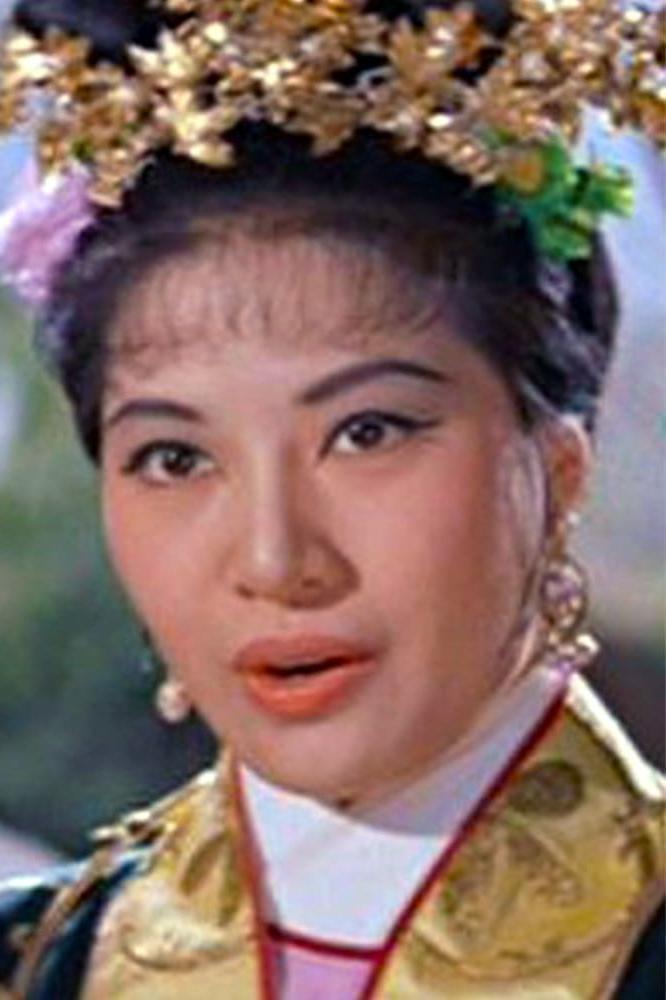Did you know that a name can be a key to unlocking a world of stories, a testament to a life lived on the silver screen? Pat Ting Hung, a name that echoes through the annals of Hong Kong cinema, represents a legacy of talent, dedication, and the enduring power of performance.
Born on April 28, 1940, in Changsha, Hunan, China, Pat Ting Hung's journey through life and cinema is one that continues to captivate and intrigue film enthusiasts. Known also by her birth name, Tsan Hua Wang, she embarked on a career that would span decades and leave an indelible mark on the industry. Her contributions extended beyond mere acting; they were a reflection of her passion, a window into her soul.
| Attribute | Details |
|---|---|
| Full Name | Pat Ting Hung (born Tsan Hua Wang) |
| Date of Birth | April 28, 1940 |
| Place of Birth | Changsha, Hunan, China |
| Known For | Actress |
| Notable Works | Qiao Tai Shou Ran Dian Yuan Yang Pu (1964), Princess Iron Fan (1966), Mi Shi (1971), Tie Shan Gong Zhu (1966), Qi Xia Wu Yi (1967), Hu Die Bei (1965) and many more. |
| Nationality | Chinese (later immigrated to the United States) |
| Filmography | Appeared in over two dozen films and television shows, including: Temptress of a Thousand Faces, Rose, Be My Love, King Cat, Princess Iron Fan, The Blue and the Black 2, The Butterfly Chalice, The Midnight Murder, and The Dream of the Red Chamber |
| Other Information | Known for portraying diverse roles, showcasing versatility in both action and drama. |
| Reference Website | IMDb |
Her career in the cinematic world was marked by a dedication to her craft. While some sources mention her role as an actor, her contributions to the industry extend far beyond mere roles. Each performance, each project, was a step further towards solidifying her name in the history of cinematic art. Her dedication to her craft is well documented; the way she approached each role was said to be with unparalleled commitment, ensuring that every character she brought to life resonated with authenticity and emotion.
- The Ultimate Guide To Nelly Children Uncover The Facts And Make Informed Decisions
- Meet The Faces Behind The Storied Characters Of General Hospital
Qiao Tai Shou Ran Dian Yuan Yang Pu (1964), was one of the first appearances of Pat Ting Hung and set the stage for her career. The film served as an important step, showcasing her acting skills to a wider audience. Her versatility was further highlighted in Princess Iron Fan (1966). This film saw her immerse herself in a role that required both grace and strength. Similarly, Mi Shi (1971) showcased her range as an actress. This, and many other projects, demonstrated her ability to embody different characters and bring them to life.
Beyond the technical aspects of her acting, Pat Ting Hungs persona was one of resilience, commitment, and the embodiment of true artistry. Her legacy, as an actress, is a shining example of dedication and the lasting effect of art. She showed us all how, through hard work and a deep love for her work, dreams can become a reality.
While the term "pat" might seem simple, it carries a multitude of meanings, often rooted in human connection and social interaction. The word itself, which can be used as both a noun and a verb, demonstrates its broad application in everyday life. To "pat" can mean to touch lightly, to tap, or to stroke gently with an open hand or other flat surface. It is often used to show comfort, encouragement, or approval, and is a common form of nonverbal communication that conveys warmth and affection.
- The Kids Of Luis Miguel A Comprehensive Guide
- Are Patrick Dempsey And Ellen Pompeo Close Friends The Truth Revealed
The act of patting is also intertwined with cultural expressions and social norms. The way a father pats his son on the head to demonstrate love or a hug that includes patting as a sign of support. These actions enhance relationships and build trust. The pat serves as a sign of building connection and understanding.
In some traditions, such as those found in Taichihealthproducts.org, a different form of "patting," known as "Louhan Patting" is used. This technique is part of Qigong, a practice that integrates physical postures, breathing techniques, and focused intention. It is believed to improve the circulation of Qi (life force energy) within the body. The act of patting oneself during these exercises can create health benefits.
The concept of a "pat" also manifests in different contexts. For example, to "pat oneself on the back" is a common idiom meaning to praise or congratulate oneself, especially for one's own accomplishments. In a completely different context, consider the historical events of China. The ancient tales of the Ching Dynasty, where a nurse is said to flee the palace with a prince. Stories such as this one give a broader meaning to the many roles that can be interpreted.
In conclusion, the "pat," in its various forms and contexts, is a simple yet powerful act that can communicate affection, build bonds, or even contribute to one's well-being. As such, the word carries depth and the capacity for both physical and emotional meaning.



Detail Author:
- Name : Anabelle Schowalter
- Username : frederik35
- Email : ayundt@gmail.com
- Birthdate : 1971-08-13
- Address : 70058 Paucek Ford Suite 689 Jasonville, WA 65772
- Phone : 623-469-4236
- Company : DuBuque LLC
- Job : Mail Machine Operator
- Bio : Id eligendi est reiciendis totam qui odit. Quasi enim commodi voluptatem ipsam. Ab maiores provident quia.
Socials
linkedin:
- url : https://linkedin.com/in/elva_zulauf
- username : elva_zulauf
- bio : Distinctio debitis deleniti omnis aut.
- followers : 1868
- following : 642
twitter:
- url : https://twitter.com/elvazulauf
- username : elvazulauf
- bio : Iusto nihil ipsa facilis culpa expedita ad. Laborum id aspernatur suscipit recusandae et expedita non. Qui vitae consequuntur nam voluptate.
- followers : 4291
- following : 1891